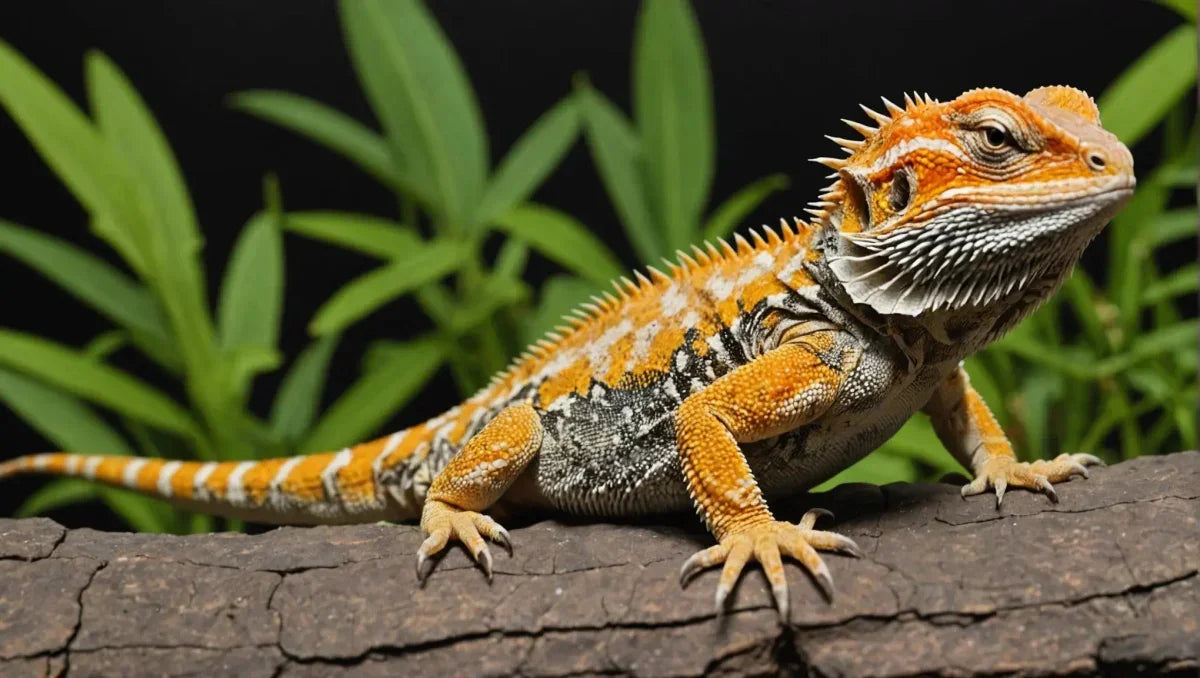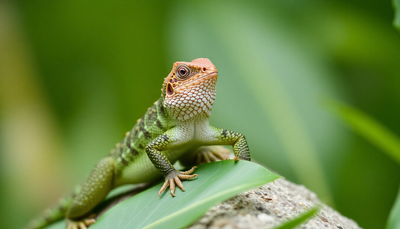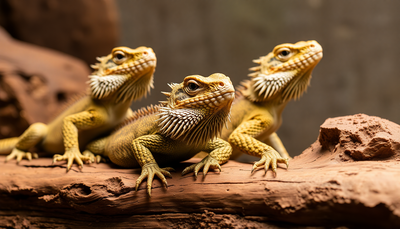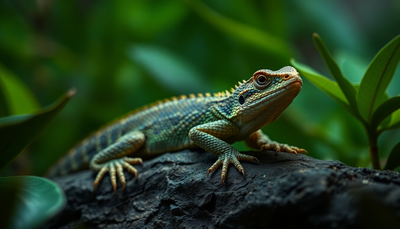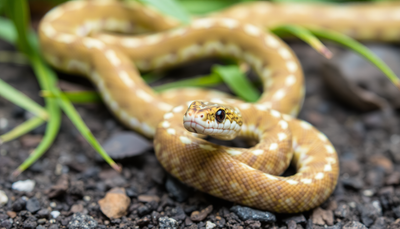Choosing the right substrate for your bearded dragon is crucial. It impacts their health, behavior, and overall well-being.
In their natural habitat, these reptiles are accustomed to certain types of substrates. Mimicking these conditions in captivity can help them thrive.
This guide will delve into the top loose substrates for bearded dragons. We'll explore their benefits, potential risks, and how they contribute to your pet's care.
Whether you're a seasoned reptile enthusiast or a new bearded dragon owner, this information will help you make an informed decision for your pet's habitat.
Understanding Substrate Importance
Substrate choice goes beyond aesthetics; it's a key component of bearded dragon care. The right substrate supports natural behaviors such as digging and burrowing.
Inappropriate substrates can lead to health issues like impaction and respiratory problems. Providing a suitable substrate ensures your bearded dragon stays comfortable and healthy in its enclosure. A well-chosen substrate also helps regulate humidity and temperature, contributing to an optimal environment.
Natural Habitat and Substrate Preferences
Bearded dragons originate from the arid regions of Australia. Their natural habitat consists of sandy and rocky terrains. These environments provide excellent opportunities for burrowing and exploring.
A substrate that mimics their natural surroundings can significantly enhance their well-being. Providing a suitable substrate supports instinctive behaviors and reduces stress in captivity. Understanding these habitat preferences helps create a more enriching enclosure for your pet. This approach promotes healthier and happier dragons, aligning with their innate instincts.
Loose vs. Non-Loose Substrates Debate
Choosing between loose and non-loose substrates is a common conundrum for reptile owners. Loose substrates like soil and sand allow for natural behaviors such as digging, which can be beneficial for bearded dragon enrichment.
However, non-loose options like tile and reptile carpet are favored for their safety and ease of cleaning. These alternatives reduce the risk of impaction and are simpler to manage. Ultimately, the decision hinges on balancing the natural behaviors with the potential health risks.
Best Loose Substrates for Bearded Dragons
Selecting the appropriate loose substrate is crucial for maintaining a healthy and stimulating habitat. Each substrate offers unique benefits and potential drawbacks. It's important to understand these differences to make an informed choice.
Here are some of the best loose substrate options for bearded dragons:
- Soil Mixtures: Mimics natural habitat, allowing burrowing and moisture retention.
- Excavator Clay: Offers customizability and supports naturalistic enclosures.
- Coconut Fiber (Coir): Sustainable, retains humidity, and is gentle on dragon skin.
When choosing a substrate, consider your bearded dragon's individual needs and environment. The right substrate can enhance your pet's well-being and simulate its native Australian desert surroundings effectively.
Soil Mixtures
Soil mixtures are popular due to their natural feel and resemblance to a bearded dragon's native environment. They allow for burrowing, which is instinctual and beneficial for mental health.
Properly mixed soils retain moisture without staying overly damp. They provide a natural environment while requiring regular monitoring to prevent bacterial growth.
Excavator Clay
Excavator clay offers a unique substrate choice, enabling the creation of custom landscapes. It allows for tunnels and mounds, promoting both exercise and exploration.
This substrate hardens like natural stone, providing a stable digging ground for your dragon. It's great for creating a dynamic and visually appealing enclosure.
Coconut Fiber (Coir)
Coconut fiber, or coir, is gaining popularity due to its eco-friendly nature and absorption abilities. It helps maintain humidity levels, which can be crucial for shedding.
This substrate is soft and gentle, reducing the risk of injuries. It's ideal for those seeking a naturalistic and sustainable substrate for their bearded dragon's habitat.
Risks of Inappropriate Substrates
Choosing the wrong substrate can harm your bearded dragon's health. Potential issues include digestive blockages and breathing problems. It's essential to research thoroughly before selecting a substrate.
Some materials might appear suitable but pose significant health risks. Understanding these dangers helps prevent avoidable health complications for your pet.
Impaction Concerns
Impaction occurs when a bearded dragon ingests substrate particles, leading to blockages in their digestive tract. This is a serious health risk and can be fatal if untreated.
Loose substrates with small particle sizes, like sand, are often culprits. It's crucial to ensure your substrate choice minimizes the risk of accidental ingestion.
Respiratory Issues
Dust from certain substrates can negatively affect your dragon's respiratory system. Fine particles can cause irritation or even infections if inhaled over time.
Selecting a low-dust substrate helps maintain a clean and breathable environment. Prioritize substrates that don't kick up dust when disturbed, ensuring your pet can breathe easily.
Substrate Maintenance and Hygiene
Maintaining a clean habitat is vital for a bearded dragon's health. Regular substrate care helps in preventing illness and stress. A proper cleaning routine ensures that harmful bacteria don't thrive.
In addition to routine cleaning, it's crucial to be mindful of the substrate's condition. Regular checks help identify when the substrate needs replacing. Keeping hygiene a priority enhances your pet's well-being and longevity.
Cleaning and Replacement
Establishing a consistent cleaning schedule is essential for substrate maintenance. Spot-clean daily to remove waste and uneaten food. Complete substrate changes should occur every month to minimize health risks.
It's equally important to monitor for any changes in the substrate's condition. Always replace it promptly if it becomes overly soiled or emits any unusual odors. This practice will help keep your dragon safe and healthy.
Quarantine Procedures
When introducing new substrates, quarantine is a crucial step. Start by separately testing the substrate for pests or contaminants. This precaution prevents potential cross-contamination in your dragon's habitat.
During quarantine, observe the substrate's behavior in a controlled environment. Pay attention to dust levels or any noticeable changes. Ensuring the new material is safe protects your bearded dragon from unforeseen health risks.
Transitioning to a New Substrate
Switching substrates requires careful preparation. Gradually introduce the new material to avoid stressing your bearded dragon. Start by mixing a small amount with the current substrate.
Observe your pet's behavior for any signs of discomfort. Patience is key to ensuring a smooth transition. This measured approach helps maintain your dragon's well-being and comfort during the change.
Substrates to Avoid
Choosing the wrong substrate can lead to health problems for your bearded dragon. Some materials pose significant risks and should be avoided. It's crucial to select substrates that ensure the safety and well-being of your pet.
Unsafe substrates can cause impaction and other health issues. Be wary of substrates that might lead to accidental ingestion or respiratory problems. By avoiding these hazards, you can create a safer habitat for your dragon.
Sand and Calcium Sand
Sand and calcium sand are often debated among enthusiasts. Both types can lead to serious health issues. Sand can easily be ingested and cause blockages.
Calcium sand, despite its promise of added nutrition, isn't safe. It tends to clump when wet, increasing impaction risk. It's best to seek safer alternatives for your bearded dragon's enclosure.
Wood Chips and Other Hazardous Materials
Wood chips are another substrate to avoid. They can splinter, posing a risk of injury to your dragon. Additionally, ingestion of wood chips can lead to digestive blockages.
Other materials, like walnut shells, are similarly hazardous. These materials can cause intestinal damage if ingested. Always choose substrates that minimize potential harm to your pet.
Conclusion: Balancing Health and Aesthetics
Creating the perfect environment for your bearded dragon involves careful substrate selection. It's vital to prioritize both health and aesthetics. A well-chosen substrate supports your dragon's natural behaviors and well-being.
By understanding the risks and benefits of various substrates, you can make informed decisions. Always balance visual appeal with your dragon's safety and health in mind.


